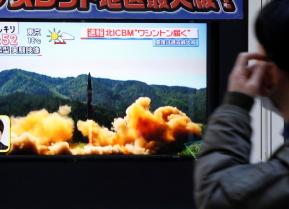The Army's Experimental Mobile 155mm Howitzer (Big Gun) Could Be a Game-Changer
Hawkeye and Brutus would be inexpensive investments with significant near-term benefits to the warfighter. They address an operational need identified by forward-deployed forces in Europe today. These systems can almost be in the field tomorrow. That means they could be a near-term win for Army Futures Command, perhaps even its first one.
The emerging security environment, marked by an intensifying technological competition among the major powers as well as the proliferation of advanced of military hardware, is leading to future battlefields that will be faster paced and highly lethal. Units that stay in one place too long are toast. The Army Chief of Staff, General Mark Milley, has observed that “if you stay in one place for longer than two or three hours, you will be dead.”
General Milley was an optimist. The Russian Army has developed a sophisticated indirect fires capability that employs electronic warfare and unmanned aircraft systems for reconnaissance and targeting in support of the rapid delivery of massed artillery and rocket fires at ranges that exceed those of U.S. and allied systems. In the 2014 Ukraine conflict, Russian Army units were able to find, fix and destroy units that stay in place for more than a few minutes with concentrated long-range fires.
Consequently, long-range precision fires is and must be the Army’s number one modernization priority. The goal is to both out-range and out-mass hostile fires. This involves developing longer-range and more lethal rockets such as the Precision Strike System and evolving an advanced version of the M109A7 self-propelled howitzer, the Paladin, into the Extended Range Cannon Artillery.
However, it will take a long time to get these new fires systems into the field. Even then, they will not meet all the Army’s needs. Greater range alone will not be enough to ensure survivability. U.S. Army artillery must be able to overmatch our enemies at every echelon, to do so, mobility is also required. Army artillery units need to be able to “shoot and scoot.” The Armored Brigade Combat Teams have this ability with the Paladin and its potential descendants. But infantry and Stryker brigade combat teams (BCTs), the early entry force, presently must rely on towed artillery that takes too long to set up, fire and relocate.
Towed howitzers cannot keep up with the Strykers when they maneuver cross country. On long road marches, the towed howitzers need to refuel three times for every Stryker refueling. The towed howitzers in both Stryker and Infantry BCTs take too long setting up into position to be responsive for calls for fire. Additionally, because they also take so long to pack up and start moving, they are highly susceptible to being destroyed by enemy counterbattery fires.
The immediate solution is to make towed artillery more mobile. Enter Hawkeye and Brutus. The former is a 105-mm howitzer mounted on a High Mobility Multipurpose Wheeled Vehicle (HMMWV or Humvee) chassis. The latter is a 155-mm howitzer married to a medium tactical vehicle platform.
The Hawkeye is the lightest, most highly maneuverable self-propelled howitzer in the world. Both it and Brutus can set up and be ready to fire in less than 2 minutes, about a fourth of the time needed for its towed cousins, and conduct a two-round fire mission in 3 minutes. This not only translates into more effective indirect fires in support of infantry and Stryker BCTs but into greater survivability for their crews.
The key to the ability of both Hawkeye and Brutus to “shoot and scoot” is the use of revolutionary soft recoil technology. This reduces the weight of stabilizing structures by as much as 50 percent compared to conventional recoil systems. Tests show that Hawkeye and Brutus can not only set up, fire and move faster than towed systems but that they do so while achieving up to ten times the accuracy. Also, Hawkeye and Brutus can conduct more fire missions per day with fewer soldiers and vehicles.
The Army has conducted multiple live-fire exercises with both Hawkeye and Brutus. A recent test of Brutus conducted by the 1st Battalion, 37th Field Artillery, 1-2 Stryker Brigade Combat Team, 7th Infantry Division:
Converting towed 105-mm and 155-mm howitzers to a mobile configuration is easy and, for an Army program, extraordinarily cheap. The process removes existing howitzer barrels from old recoil systems, adds the new soft recoil system, then mounts them on a Humvee or medium tactical vehicle. Both vehicles are currently in serial production. The entire procedure is more akin to a modification than an actual “new start” program. Because they operate with fewer vehicles and personnel and reduce the wear and tear on the howitzers during movement, Hawkeye and Brutus could help pay for themselves in reduced operations and maintenance costs.
Hawkeye and Brutus would be inexpensive investments with significant near-term benefits to the warfighter. They address an operational need identified by forward-deployed forces in Europe today. These systems can almost be in the field tomorrow. That means they could be a near-term win for Army Futures Command, perhaps even its first one.
Dan Gouré, Ph.D., is a vice president at the public-policy research think tank Lexington Institute. Goure has a background in the public sector and U.S. federal government, most recently serving as a member of the 2001 Department of Defense Transition Team. You can follow him on Twitter at @dgoure and the Lexington Institute @LexNextDC. Read his full bio here.
This first appeared in RealClearDefense here.


